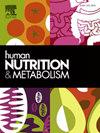肠道普氏粪杆菌的分离、益生菌特性鉴定和全基因组测序
IF 1.8
Q3 ENDOCRINOLOGY & METABOLISM
引用次数: 0
摘要
prausnitzii粪杆菌(Faecalibacterium prausnitzii)是人类肠道中非常重要的产丁酸菌,但其对氧气的极度敏感阻碍了其分离进一步研究和应用。本研究试图从人类粪便中分离鉴定prausnitzii菌株,并进行全基因组测序,以研究其基本特征和益生菌潜力。成功获得两株菌株,分别命名为F. prausnitzii 20和F. prausnitzii 28,在24 h进入对数生长期,48 h进入稳定生长期。在72 h时,F. prausnitzii 28生长较好,培养基pH低于F. prausnitzii 20。菌株prausnitzii 28的丁酸产量可达38.68 mmol/L。这两株菌株对pH为3.0和0.3%的胆汁盐具有耐受性,能够以葡萄糖、菊糖、β-葡聚糖和魔芋葡甘露聚糖为唯一碳源生长,但不能以果胶、阿拉伯半乳聚糖和阿拉伯木聚糖为唯一碳源生长。对α-葡萄糖苷酶和α-淀粉酶的抑制率分别高达60.90%和32.69%,对DPPH、ABTS和超氧阴离子自由基的清除能力分别为91.92%、73.06%和95.82%。F. prausnitzii 28全基因组大小为3950,000 bp, GC率为56.50%,共有2752个基因,其中编码序列2645个,非编码序列107个。基因预测证实了F. prausnitzii 28具有耐酸、耐胆盐、抗氧化和粘附性能。本研究为prausnitzii的研究提供了新的菌株,也为研究和开发基于prausnitzii的降糖和其他健康方面的治疗方法提供了理论依据。本文章由计算机程序翻译,如有差异,请以英文原文为准。
Isolation, probiotic characterization and whole-genome sequencing of gut Faecalibacterium prausnitzii
The next generation of probiotics Faecalibacterium prausnitzii is a very important butyric acid producing bacterium in the human intestinal tract, but its extreme sensitization to oxygen hinders its isolation for further study and application. The current study attempted to isolate and identify F. prausnitzii strains from human feces, as well as sequencing the whole genomes, to study their basic characteristics and probiotic potentials. Two strains were successfully obtained named F. prausnitzii 20 and F. prausnitzii 28, which entered the logarithmic growth phase at 24 h and then the stable growth phase at 48 h. At 72 h, F. prausnitzii 28 grew better and resulted a lower pH in culture medium than F. prausnitzii 20. The butyric acid production of F. prausnitzii 28 was up to 38.68 mmol/L. The two strains were tolerant to pH 3.0 and 0.3 % of bile salt, and were capable of growing on glucose, inulin, β-glucan, and konjac glucomannan as the sole carbon source, but not on pectin, arabinogalactan, and arabinoxylan. Additionally, they exhibited good inhibitory activity against α-glucosidase and α-amylase, with inhibition rates of up to 60.90 % and 32.69 %, respectively, as well as strong scavenging abilities for DPPH, ABTS, and superoxide anion free radicals (91.92 %, 73.06 %, and 95.82 %, respectively). The whole genome of F. prausnitzii 28 had a size of 3,950,000 bp with a GC ratio of 56.50 % and possessed 2752 genes consisting of 2645 coding sequences and 107 non-coding sequences. Gene prediction confirmed that F. prausnitzii 28 had acid resistance, bile salt resistance, oxidation resistance and adhesion properties. This study provided new strains for the study of F. prausnitzii, as well as a theoretical basis for the research and development of F. prausnitzii based therapies in hypoglycemic and other health aspects.
求助全文
通过发布文献求助,成功后即可免费获取论文全文。
去求助
来源期刊

Human Nutrition and Metabolism
Agricultural and Biological Sciences-Food Science
CiteScore
1.50
自引率
0.00%
发文量
30
审稿时长
188 days
 求助内容:
求助内容: 应助结果提醒方式:
应助结果提醒方式:


